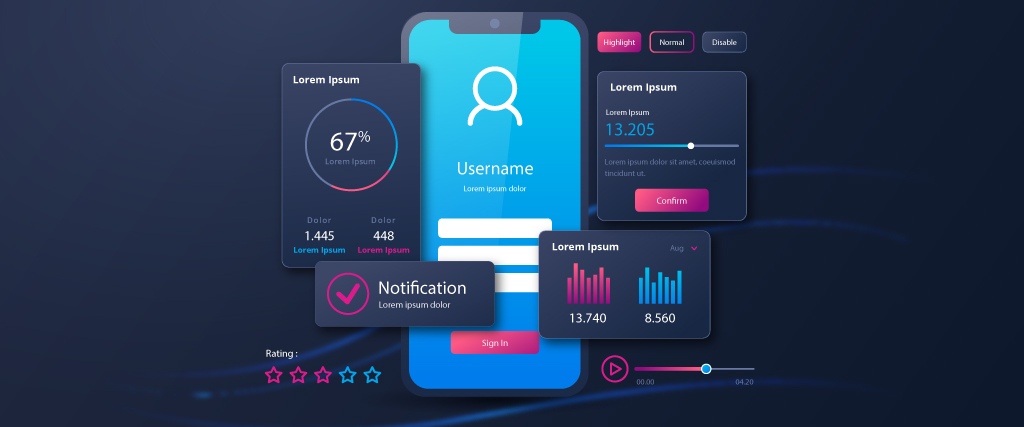Mobile app development technologies: COVID-19’s mandatory social isolation and lockdown measures are fueling a steady increase in cellphone use. According to a recent statistic, 33 billion new applications were downloaded worldwide in 2020.
Globally, mobile users spent 180 billion aggregate hours in the third quarter, including a record $28 billion on technology applications. Without a doubt, the pandemic would have a lasting influence on future mobile app technology development trends and technology, just as it did on mobile consumer behavior.
A well-designed and distinctive business app can indeed help you build your brand and keep consumers. Every business that wants to sell items, provide support, provide service, or provide information will undoubtedly seek to make their mobile app user-friendly and accessible to their clients.
It is critical to choose which mobile development platforms or mobile technologies will best meet your demands, apart from determining how your mobile application will work and the resources it will need. For app tech, tech stack like Yugasa Software Labs plays an important role.
Whether you’re developing Android mobile apps, iOS, hybrid, or cross-platform applications, you need to educate yourself with the latest mobile development application technology. Today, five primary programming languages are utilized to create mobile applications.
The five most popular programming languages for mobile application development are as follows: Mobile app development technologies
Swift
Swift is the language to use if you’re developing anything exclusive to Apple OS (native to Apple). Swift is a popular language for developing iOS applications because it combines extensive functionality with minimum code that is easy to maintain.
Swift is a sophisticated and straightforward programming language widely used by Apple developers for macOS, iOS, watchOS, and tvOS.
C++
C++ serves as the foundation for most programming languages and offers the ability to construct dynamic technological applications. C++ is a widely sought-after language for developing cross-platform applications nowadays.
You can create C++ code once and reuse it across several platforms (Android, iOS, and Windows) without impacting the application’s speed or security.
Due to its straightforward and successful compiler-based approach, it is a very versatile tool that can be used on various systems. Before the launch of Swift in 2014, its sibling language, Objective-C, was utilized for application development on Apple platforms.
Java
Since the launch of Android in 2008, this object-oriented programming language has become the de facto standard for developing Android mobile applications.
Java is a highly versatile language that contributes to your application’s flexibility, modularity, and extensibility. Java is simple to use, and users have access to a large number of open-source libraries.
HTML5
If your firm is considering building web-frontend apps for mobile devices, there is no better technology to employ than HTML5.
Organizations that see cross-platform mobile application development as a daunting endeavor often turn to HTML5, enabling them to achieve the necessary functionality and a fantastic user experience.
HTML5’s “write-once-run-anywhere” benefit speeds up a time to market, increases your app’s exposure, keeps development costs low, and allows offline surfing.
PHP
PHP is a straightforward language to learn and employs a three-layered paradigm to assist in creating dynamic mobile apps and online applications. It is ideal for applications that need database integration.
Popular PHP frameworks like Laravel, Lumen, CodeIgniter, and Symfony are often utilized to create mobile applications with a complicated backend and considerable data migration.
Large-scale application development projects powerfully choose this open-source language since it simplifies caching, authentication, and routing.
For individuals interested in developing their mobile applications utilizing these programming languages, many sophisticated technological resources are accessible.
These developer tools are ideal for creating mobile applications from the ground up and even include cross-platform capabilities for reaching a broader audience.
PhoneGap
PhoneGap, formerly known as Apache Cordova, is an open-source mobile application development platform that leverages CSS3, HTML5, and JavaScript to build native Android, Windows, and iOS apps.
This framework enables the combination of native and hybrid code snippets, resulting in neither native mobile nor entirely web-based programs.
Application Accelerator
This open-source framework is ideal for developing hardware-based applications. The framework leverages HTML, PHP, and JavaScript to enable native iOS, Android, and Windows UWP applications.
RhoMobile
RhoMobile Suite is built on the robust Rhodes open-source framework, which enables the creation of native apps for numerous platforms. It is often used to develop cross-platform and native mobile consumer and corporate apps.
RhoMobile develops applications for most operating systems, including iOS, Android, and Windows, using web technologies such as CSS3, HTML5, JavaScript, and Ruby.
WidgetPad
WidgetPad is one of the most popular open-source frameworks for developing cross-platform mobile applications.
It uses online technologies like JavaScript and HTML5 to provide a plethora of features such as source code editing, version control, and distribution. This open-source framework facilitates the creation of apps for Android, iOS, and the web.
MoSync
MoSync is an open-source multi-platform mobile application development kit written in JavaScript, PHP, Ruby, and Python.
It is connected with the Eclipse IDE and allows the creation of native mobile apps for numerous platforms using C/C++ programming.
Flutter
Flutter is the newest and most popular cross-platform mobile application development solution. It is written in Dart rather than JavaScript, which enables speedy and practical analysis, the creation of UIs, the inclusion of highlights, and the correction of faults in milliseconds.
Google’s open-source, cross-platform SDK offers a wide variety of Google-supported plugins and enables mobile applications for both the Android and Apple iOS platforms.
Native React
This open-source JavaScript framework has quickly become the most popular solution for developing native mobile applications.
It provides extensive support for integrated development environments (IDEs) and other mobile app development technologies that allow the production of native iOS and Android applications.
The ReactNative framework enables the development of native mobile applications using JavaScript and the same design principles as React.
Apps produced using React Native are accurate mobile applications indistinguishable from those written with Objective-C, Java, or Swift.
Ionic
Ionic is a framework for developing mobile applications that are generally used nowadays. It is written in the HTML5 programming language. It mixes HTML, CSS3, and JavaScript to create native applications and their UI functions rapidly.
This mobile application technology development technique is compatible with the UIWebView on iOS and the WebView on Android.
Ionic is a web application framework built on top of Angular JS and Apache Cordova. Ionic provides web developers with the simplest method to design, grow, and scale cross-platform mobile applications.
Wrapping Up
As a result, we can conclude that mobile applications have evolved into the most convenient method of communication between companies and their clients.
However, there are many possibilities when selecting the most advanced technology for developing exceptional mobile applications.
The best course of action is to create a game plan and engage the services of a bespoke software development and technology stack for a web development firm like Yugasa Software Labs specializing in full-cycle application development.
Read More: 10 MOBILE APP DEVELOPMENT TRENDS IN 2020-2021
























